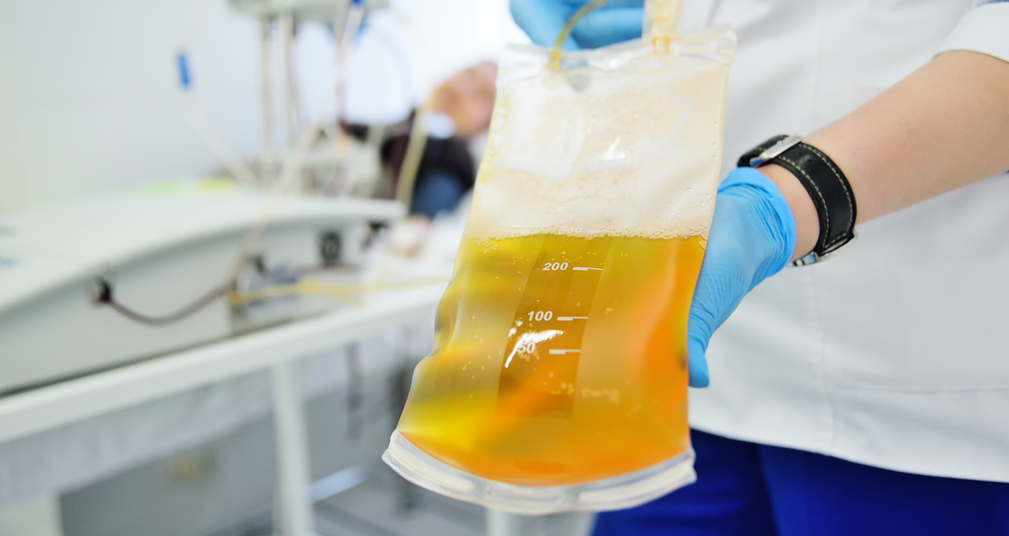Plasma donation is a powerful way to help save lives, especially patients suffering from trauma, burns, clotting disorders and immune deficiencies. But who can donate plasma, and what should you expect from the process?
First, What Exactly Is Plasma?
Plasma is like the worker bee of your blood. It’s a clear liquid that makes up 55% of your blood volume. Plasma holds important components of your blood and carries them throughout your body.
Plasma’s many jobs include: carrying red blood cells to your lungs; maintaining your blood pressure; delivering water, hormones, nutrients, electrolytes and proteins to parts of your body; helping regulate your body temperature; and removing waste products.What Is Plasma Donation Used For?
When a patient experiences massive blood loss, such as from an accident or childbirth complications, plasma helps the blood to clot and restores the balance of the critical substances our bodies need.
Plasma can be used to treat patients with:
-
Severe burns or trauma
-
Bleeding disorders like hemophilia
-
Immune system deficiencies
-
Certain rare diseases
Requirements to Donate Plasma
To be eligible to give plasma, donors must meet basic blood donation criteria. They include:
-
Be at least 16 years old
-
Weigh at least 110 pounds
-
Be in good general health
-
Pass a medical screening and health history check
While donors of any blood type are encouraged to donate plasma, people with type AB blood are especially valuable plasma donors because their plasma can be given to patients with any blood type.
What Disqualifies You from Donating Plasma?
Previously pregnant donors are tested for something called HLA antibodies, because if they have these antibodies, it could put patients at risk for transfusion-related acute lung injury (TRALI).
But as long as no HLA antibodies are present, and you meet basic eligibility requirements and are not affected by additional eligibility requirements, you can donate plasma with Vitalant.
The Plasma Donation Experience
At Vitalant, plasma donation is done through a process called apheresis. A machine separates plasma from your blood and returns the remaining components — like red cells and platelets — back to your body, along with saline. The process takes about 1–1.5 hours, and donors can typically give plasma every 28 days.
You can donate plasma at most Vitalant donation centers and at select blood drives. We ensure a safe, comfortable experience with trained staff, sterile equipment and a relaxing environment. Repeat donors are even rewarded with gift cards and other incentives through our Donor Rewards program.
Final Thoughts
If you meet the requirements to donate plasma, your contribution can make a real difference. Whether you're a first-time donor or a regular, knowing who can donate plasma empowers you to take part in this lifesaving mission.
Ready to help? Schedule your plasma donation today.
Make Appointment Now
